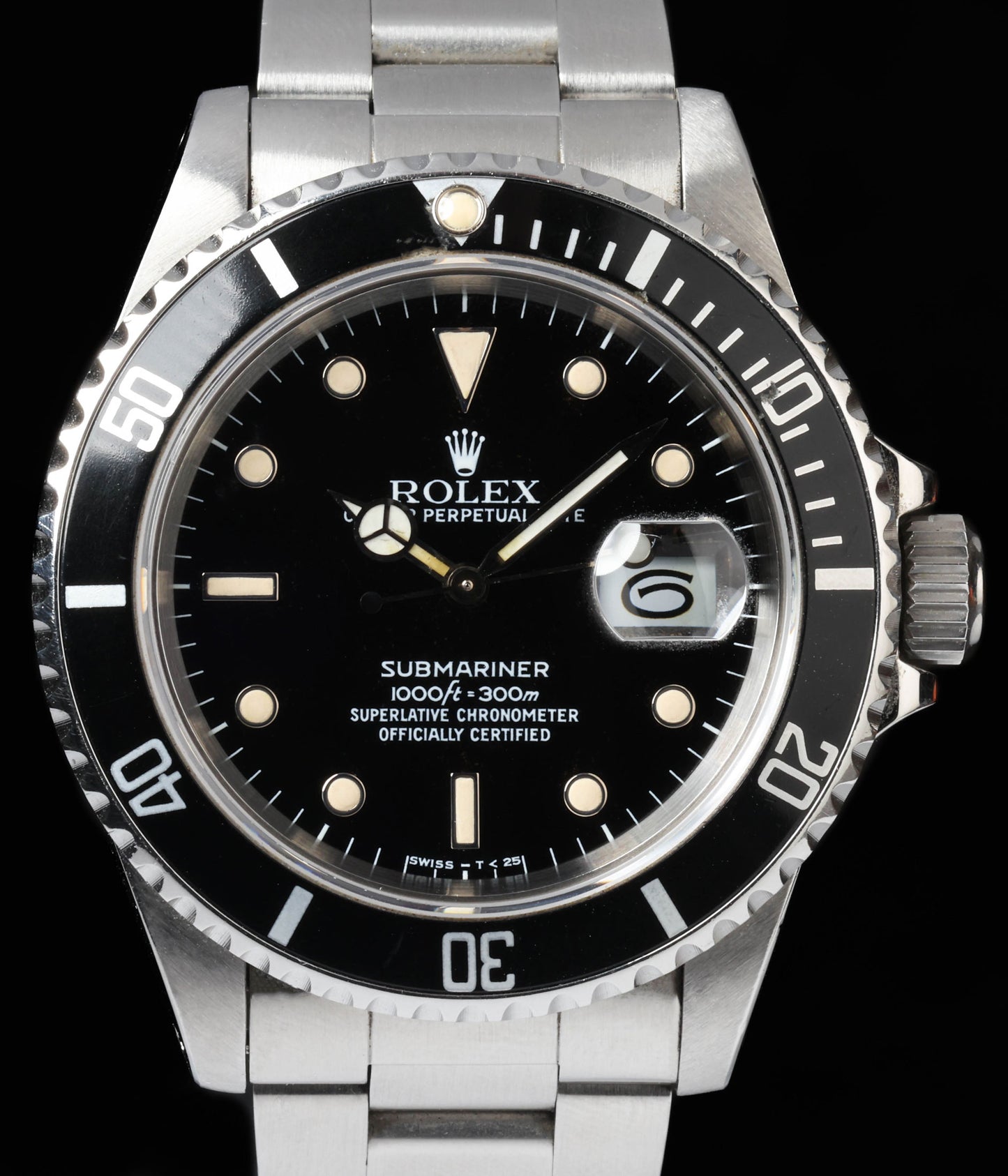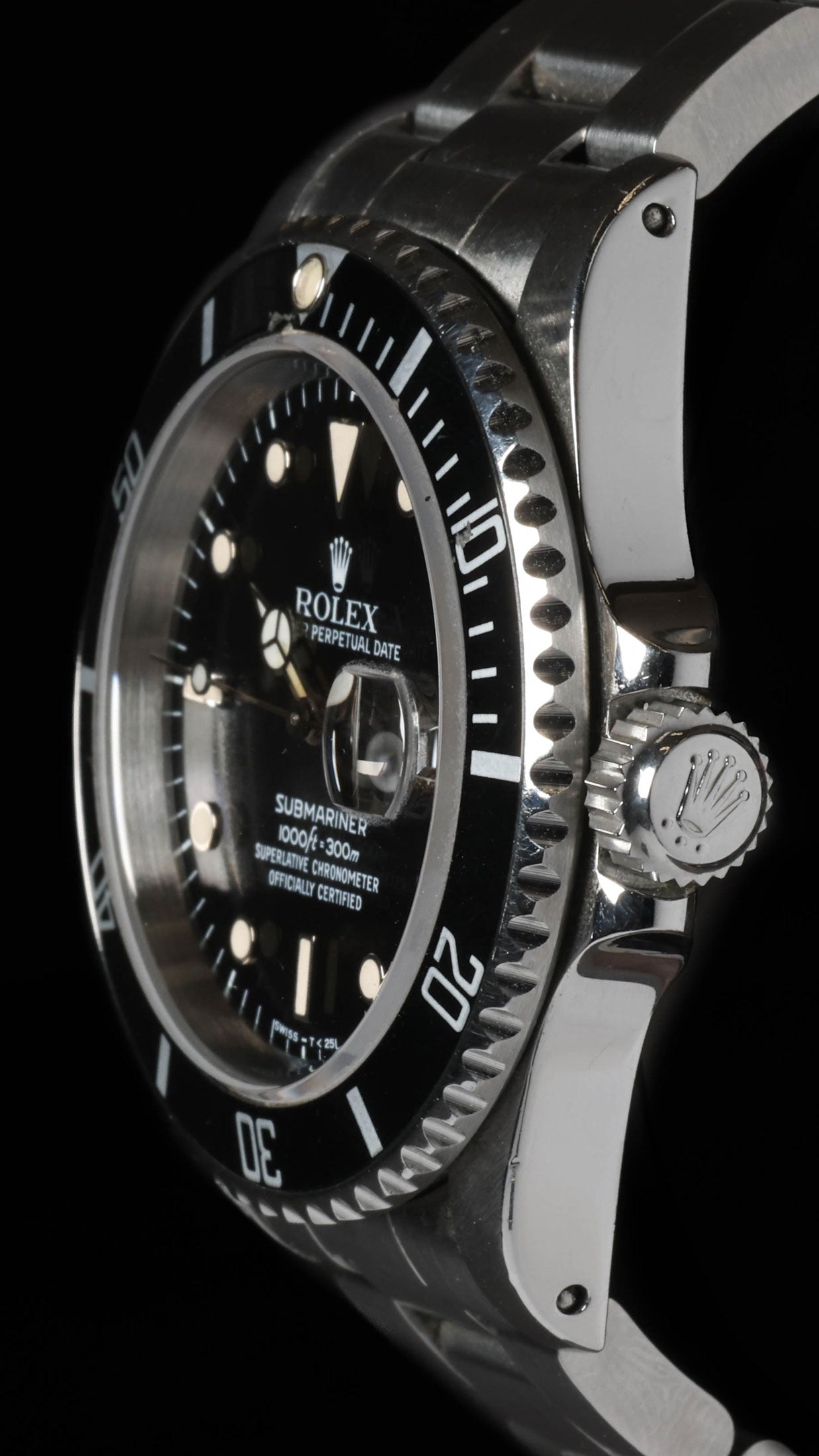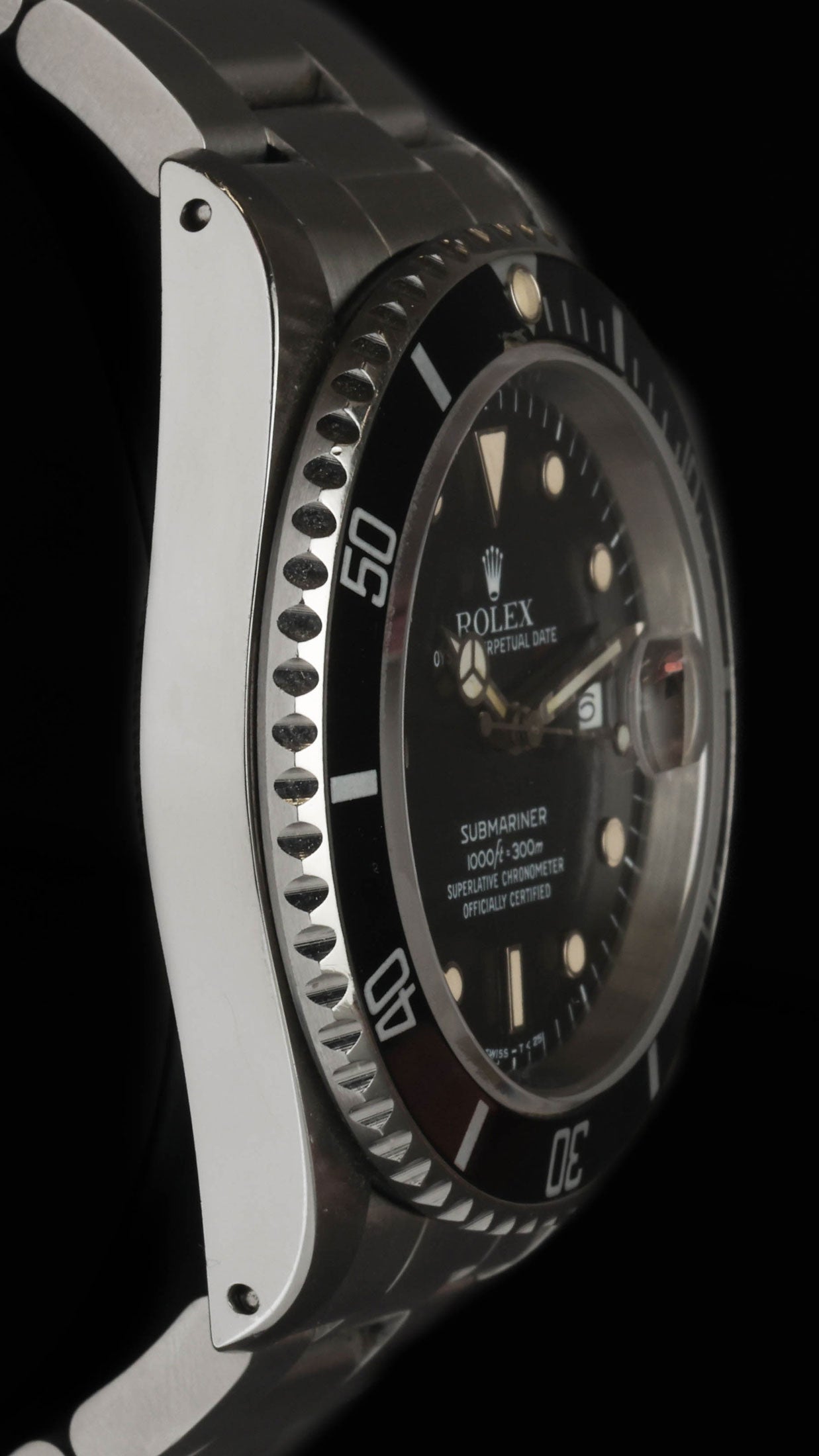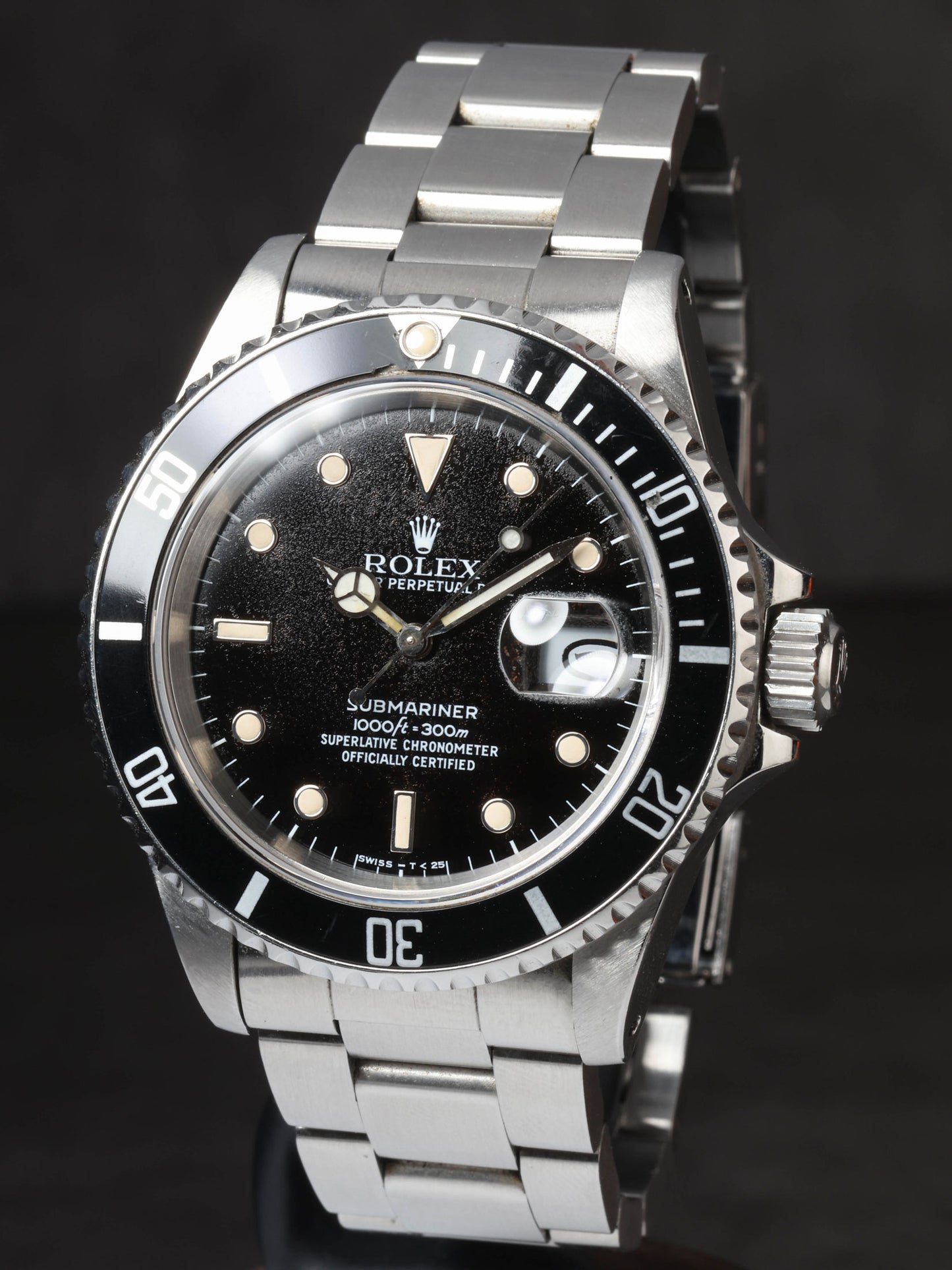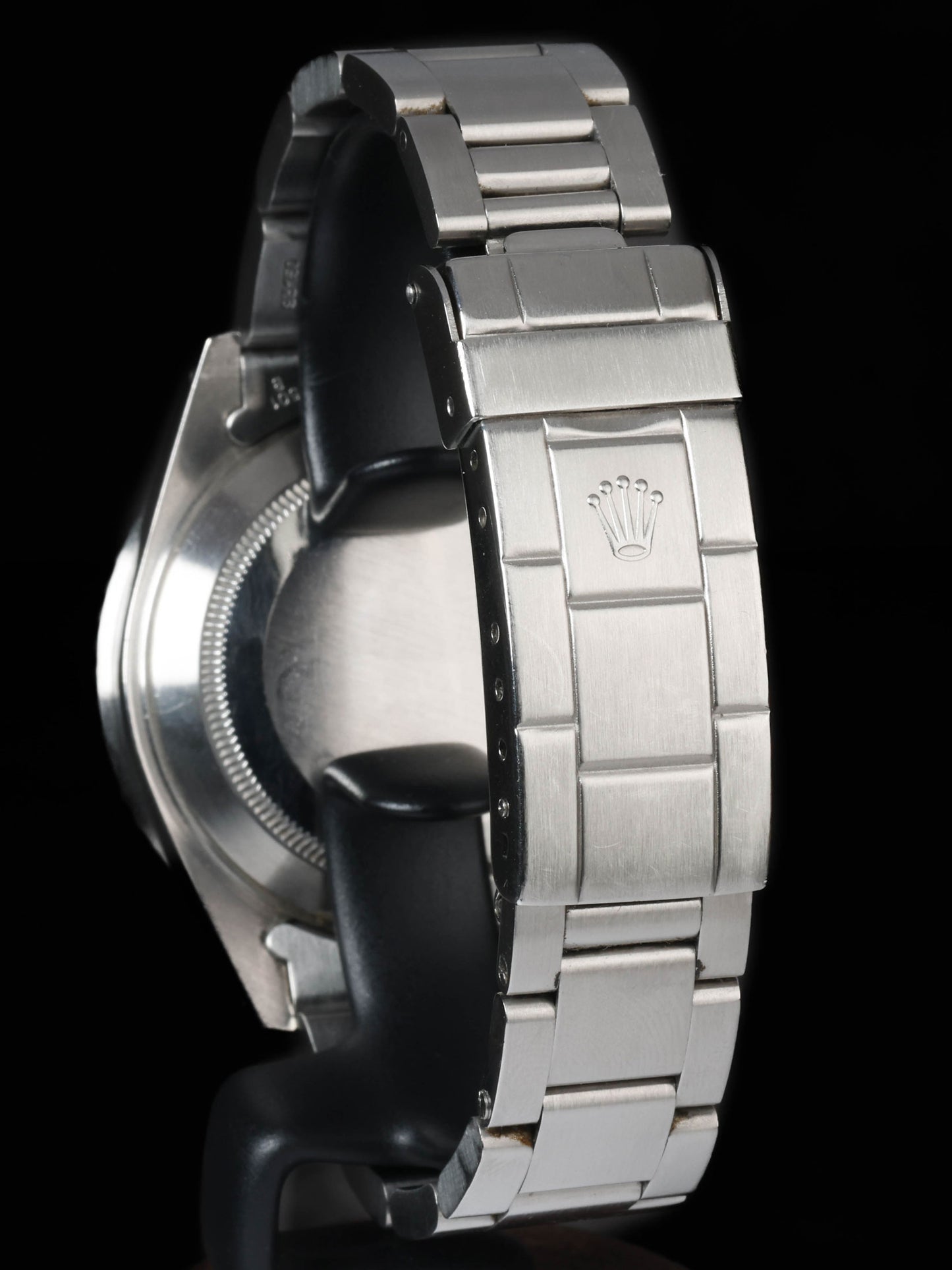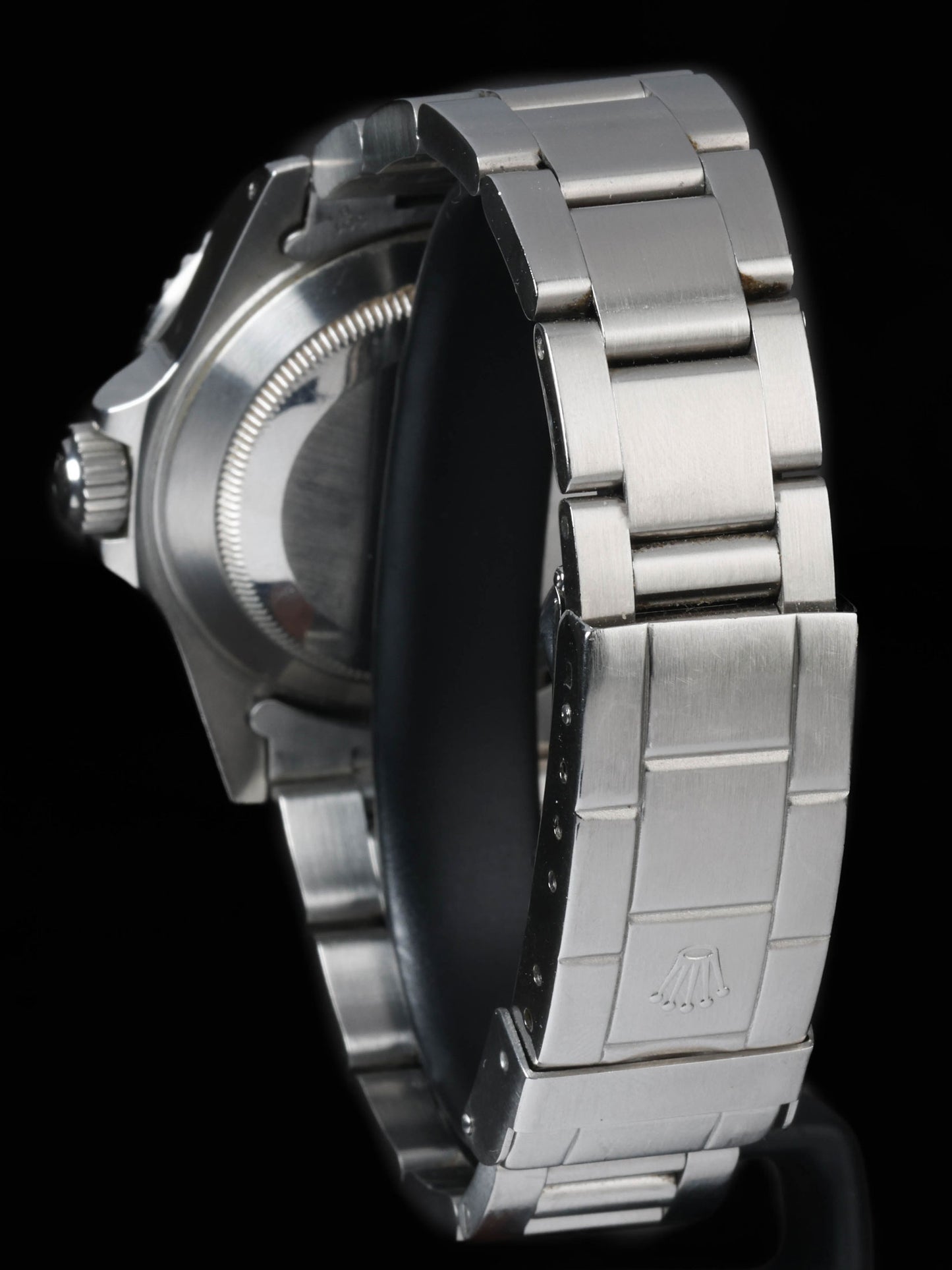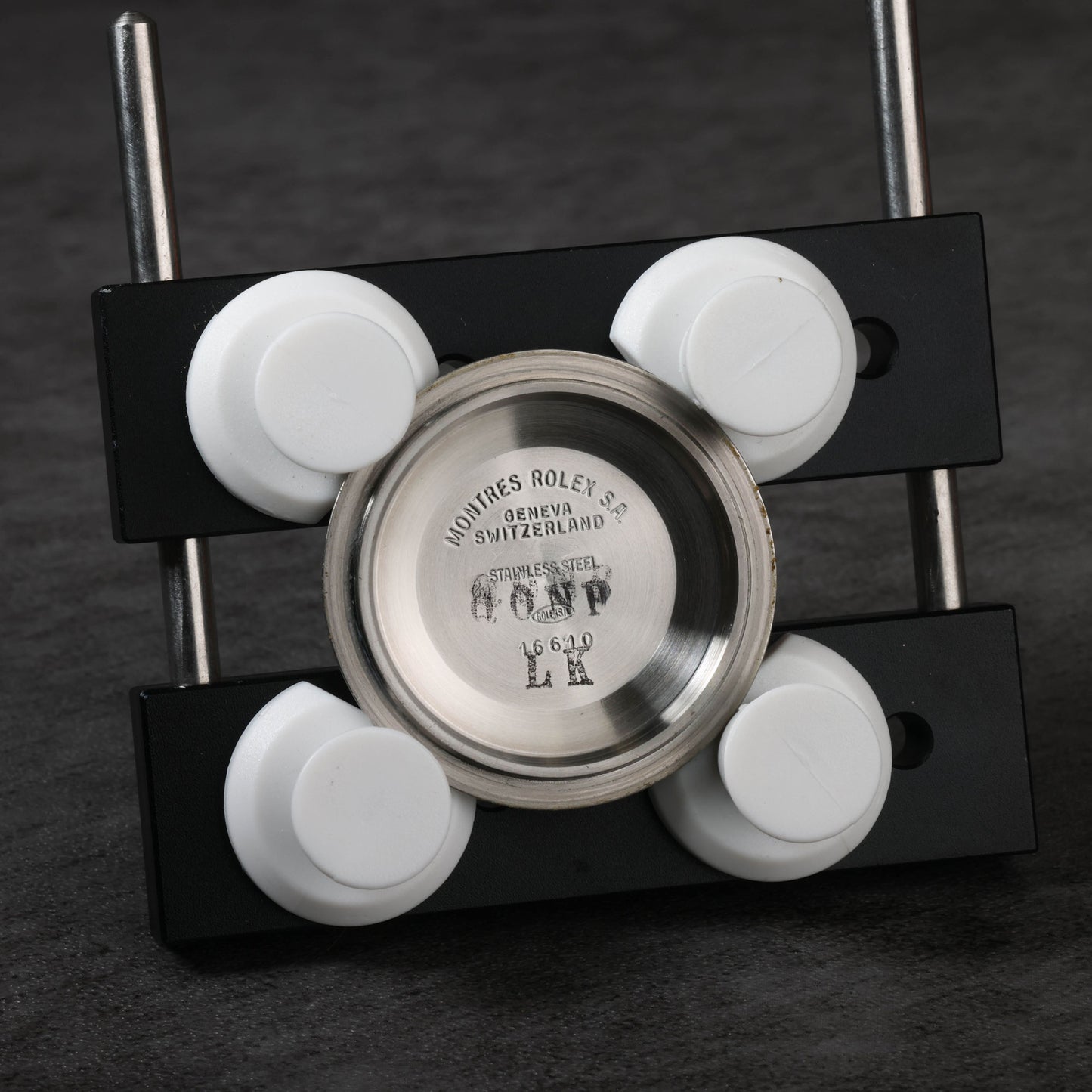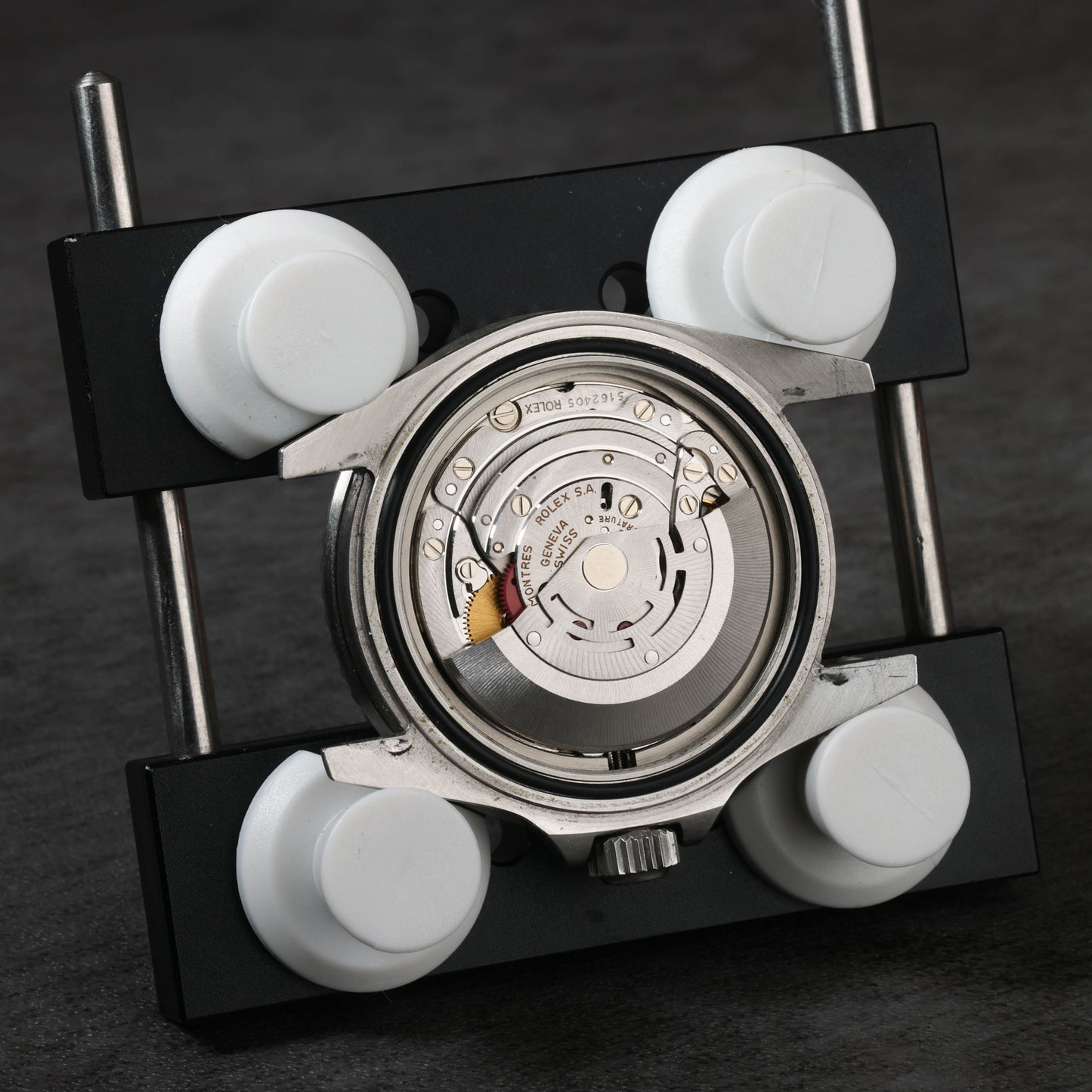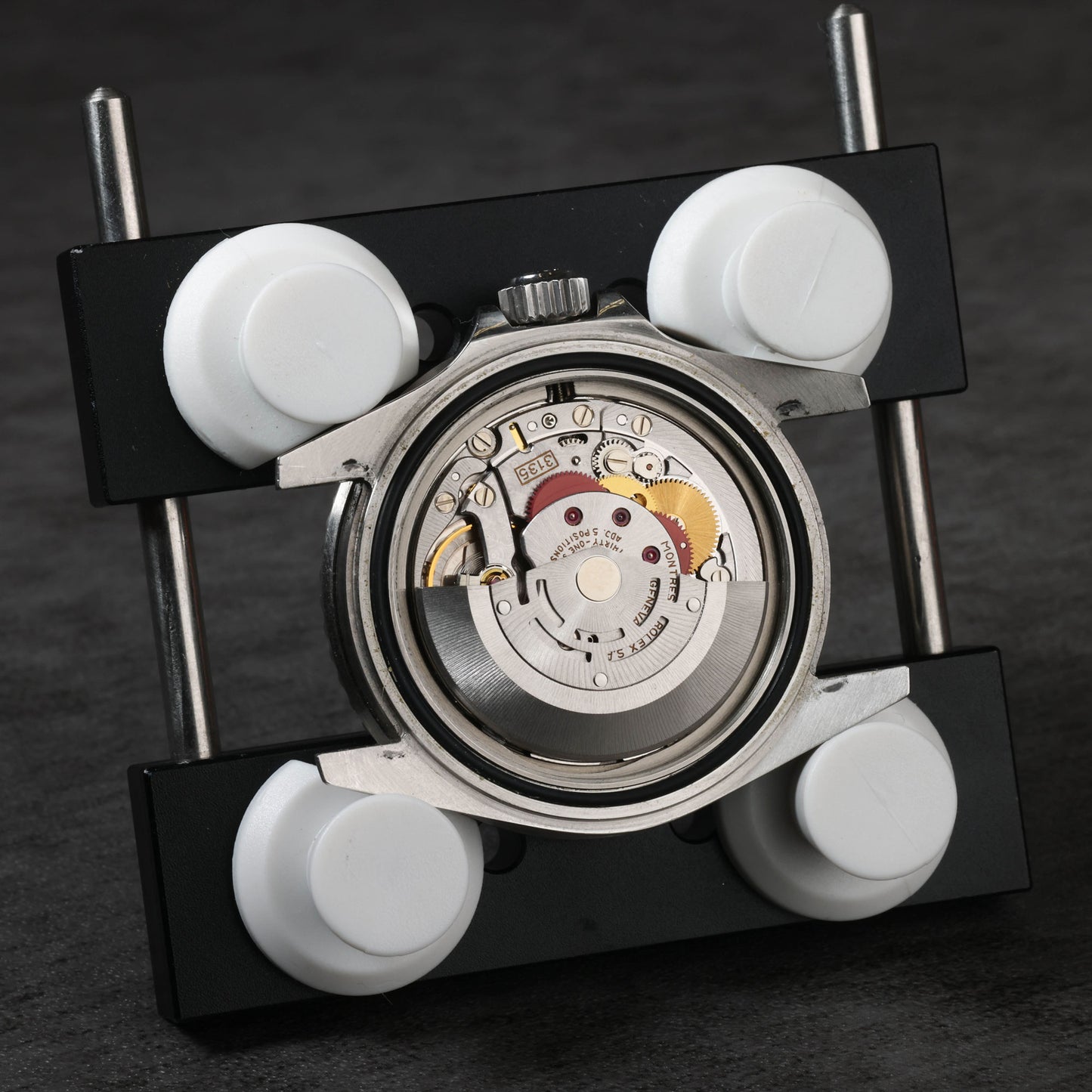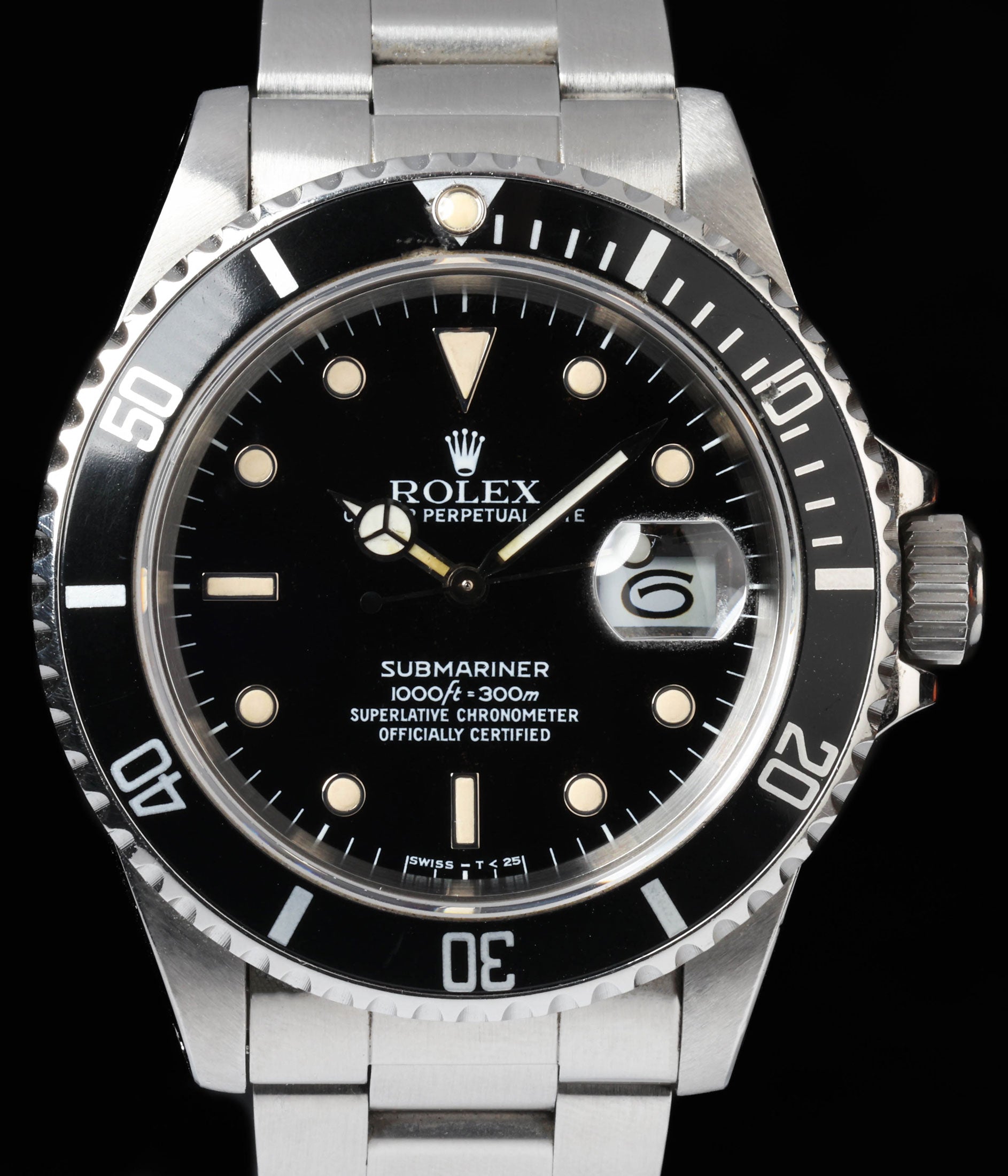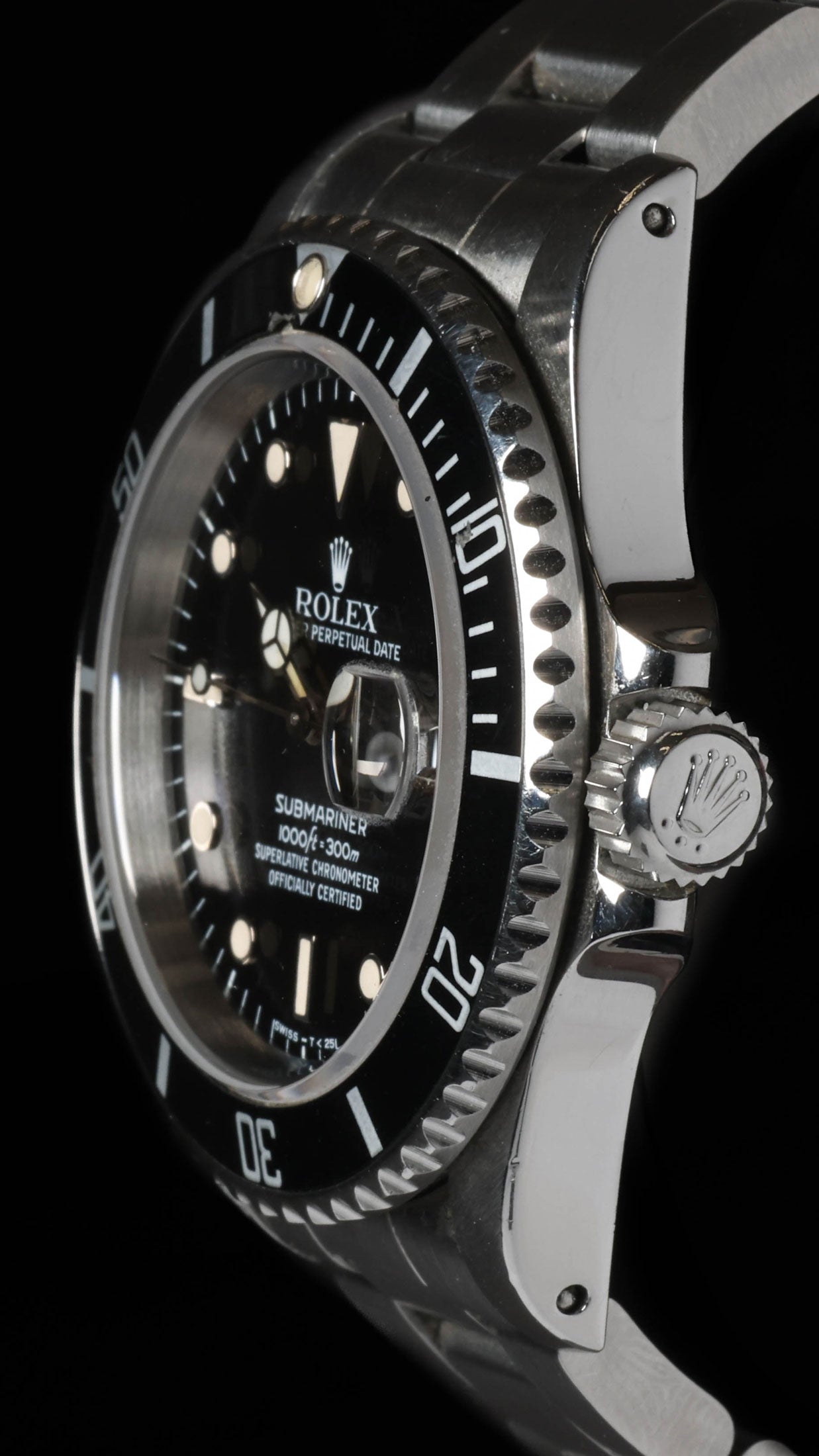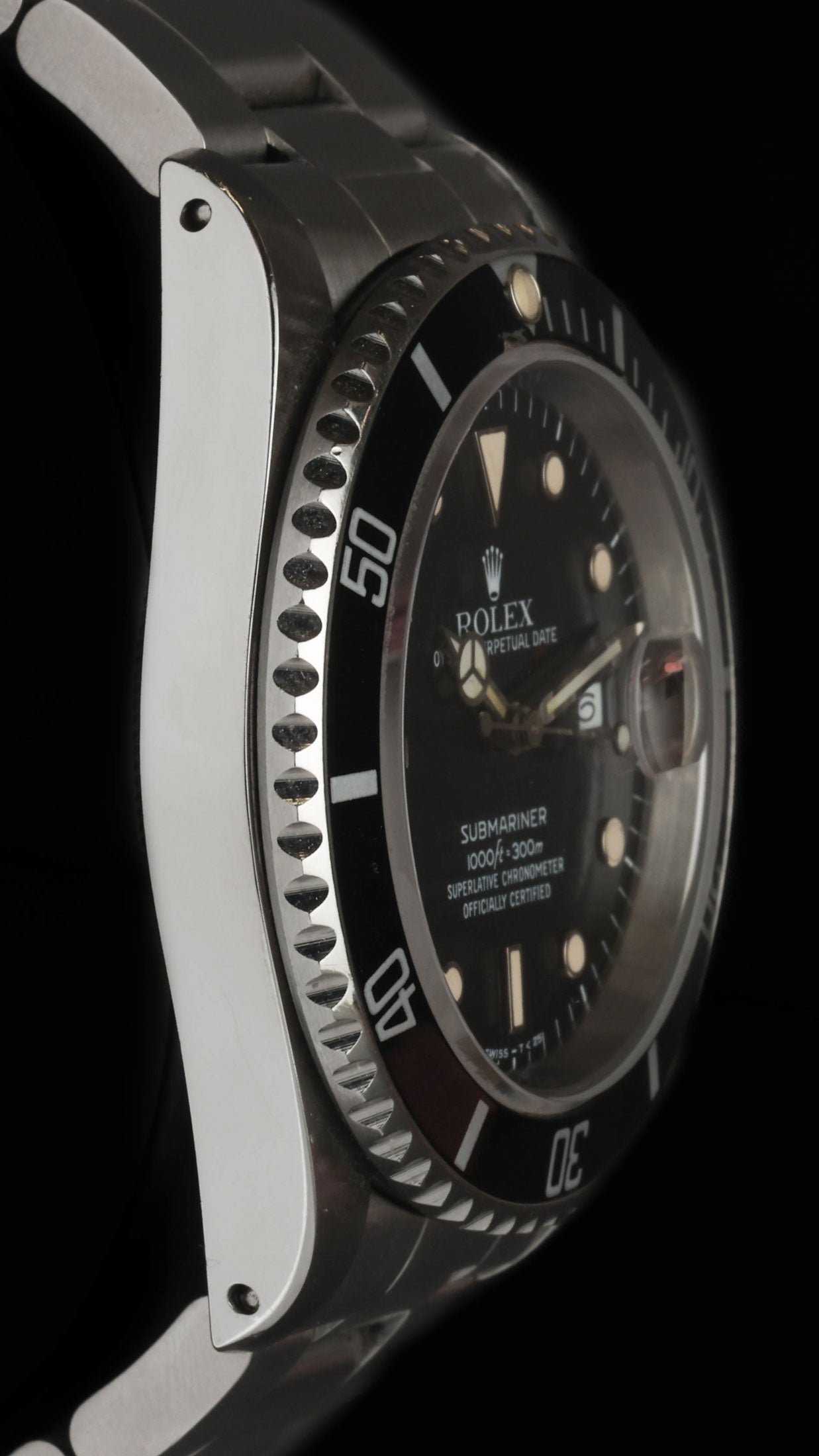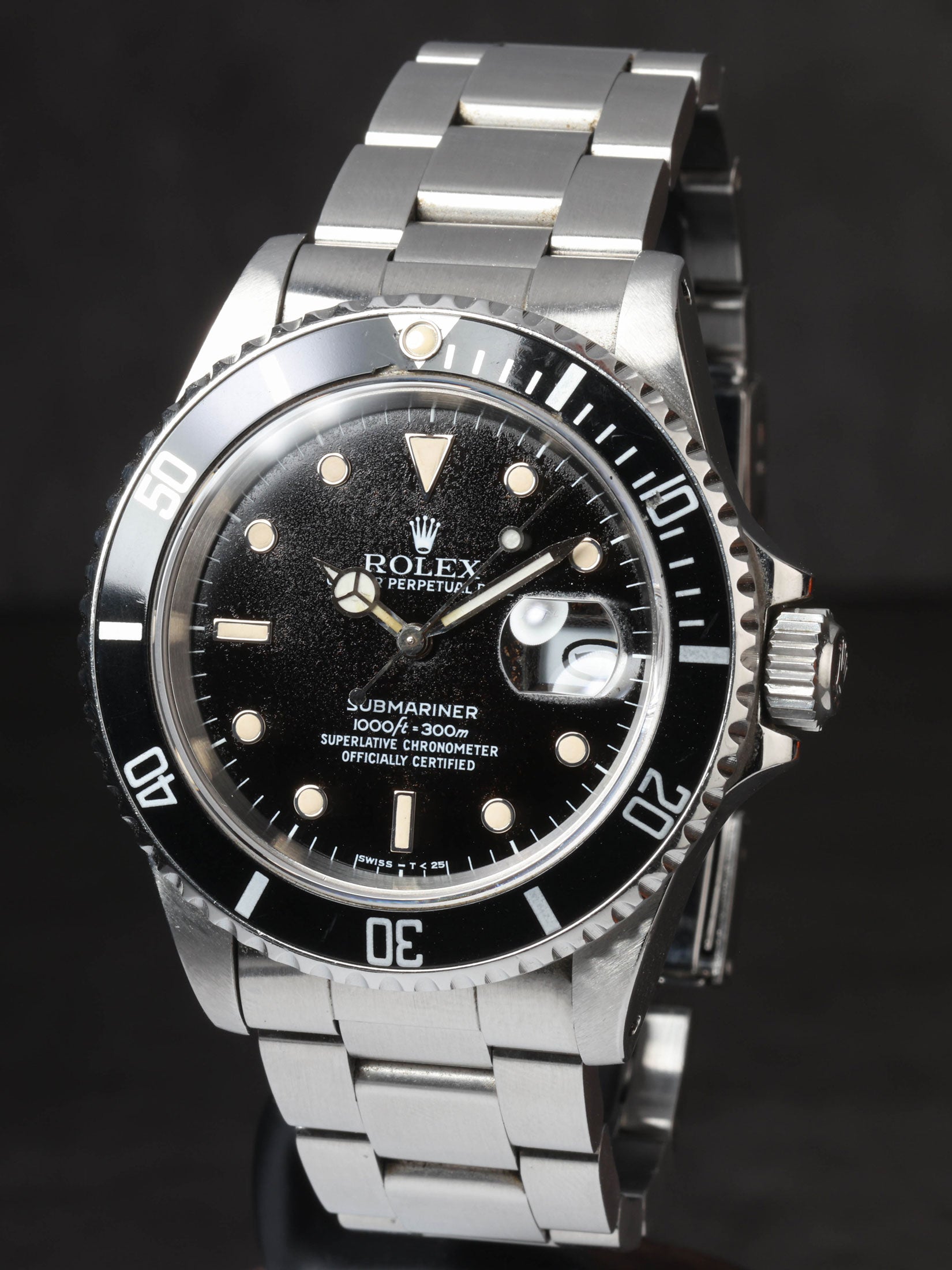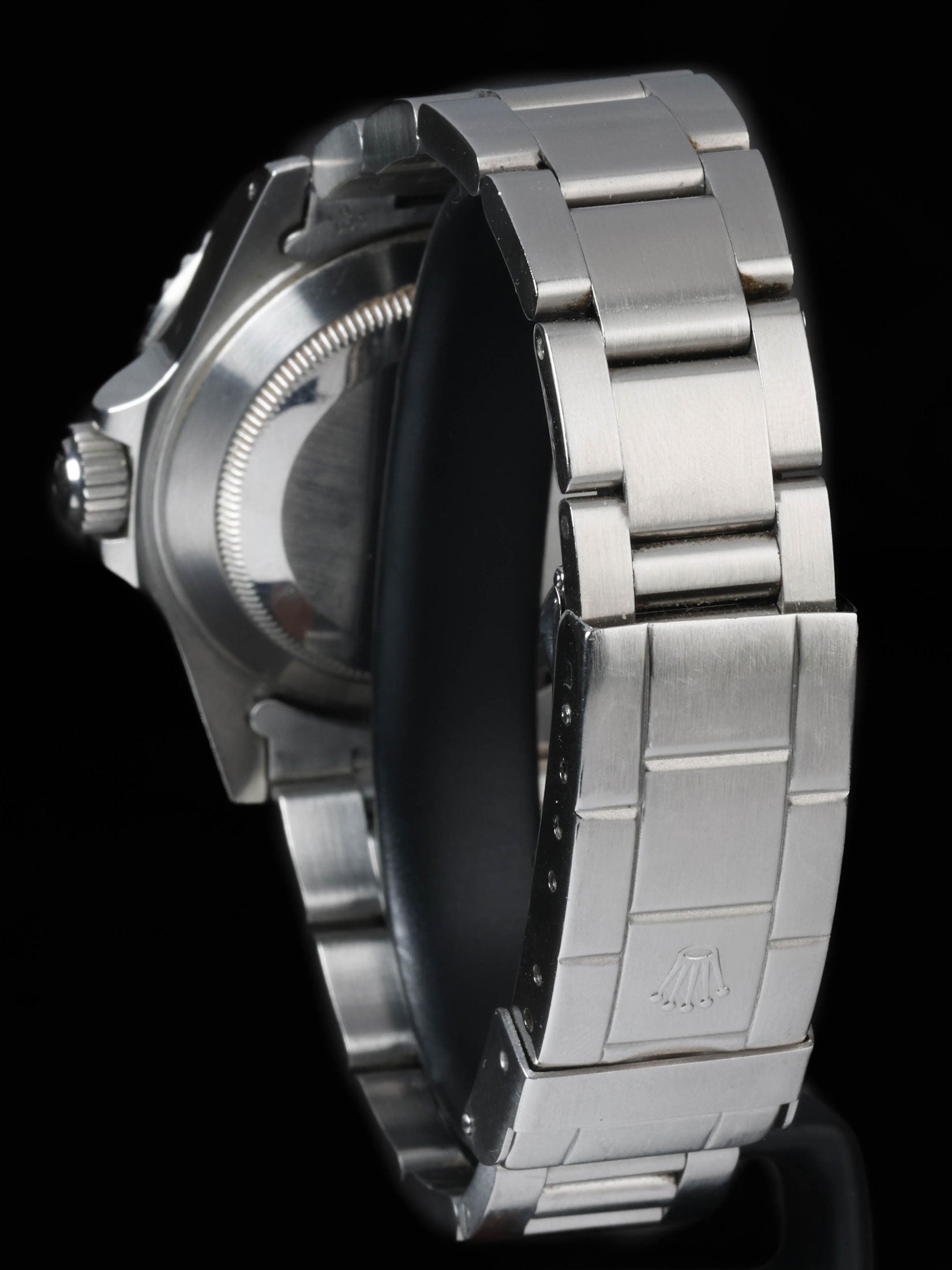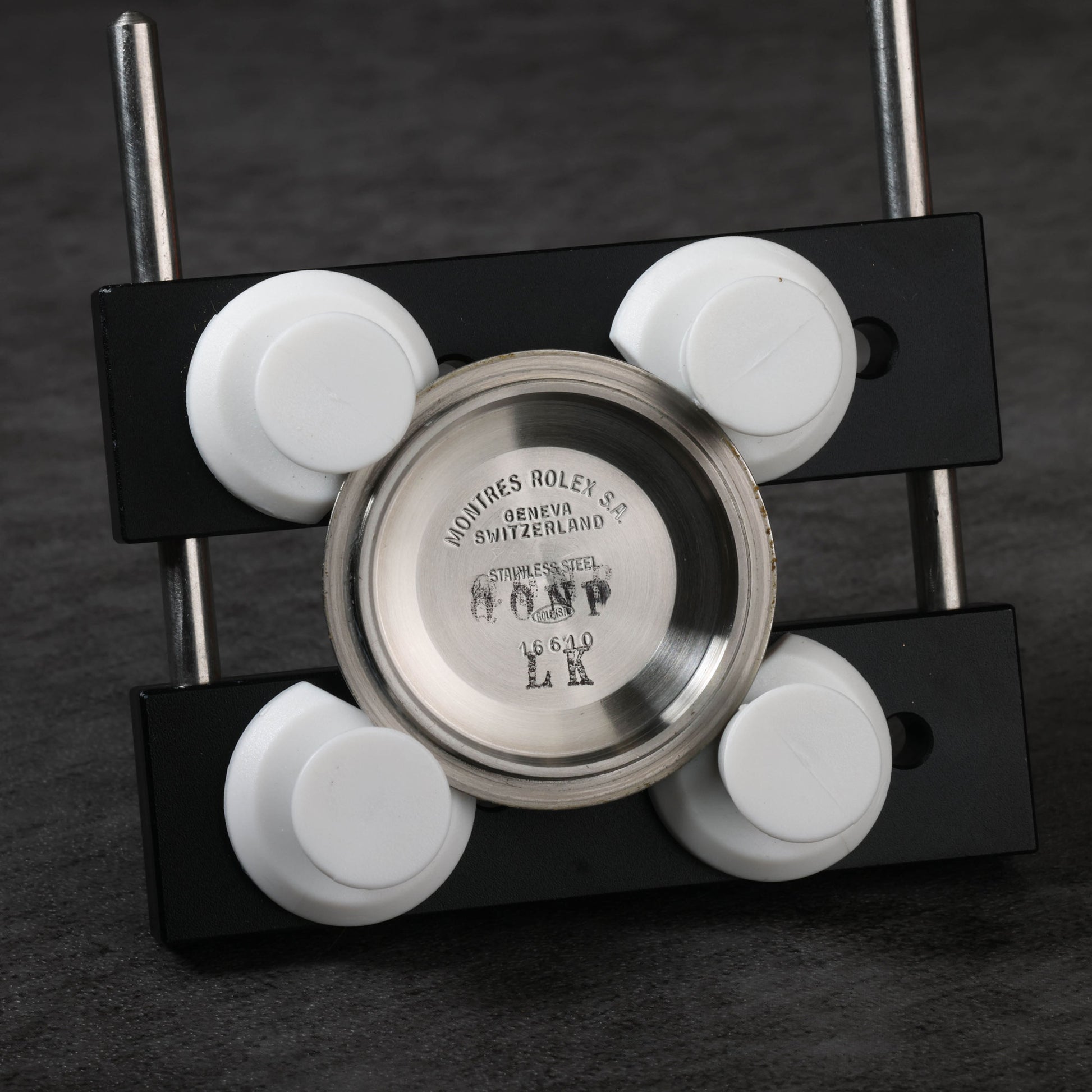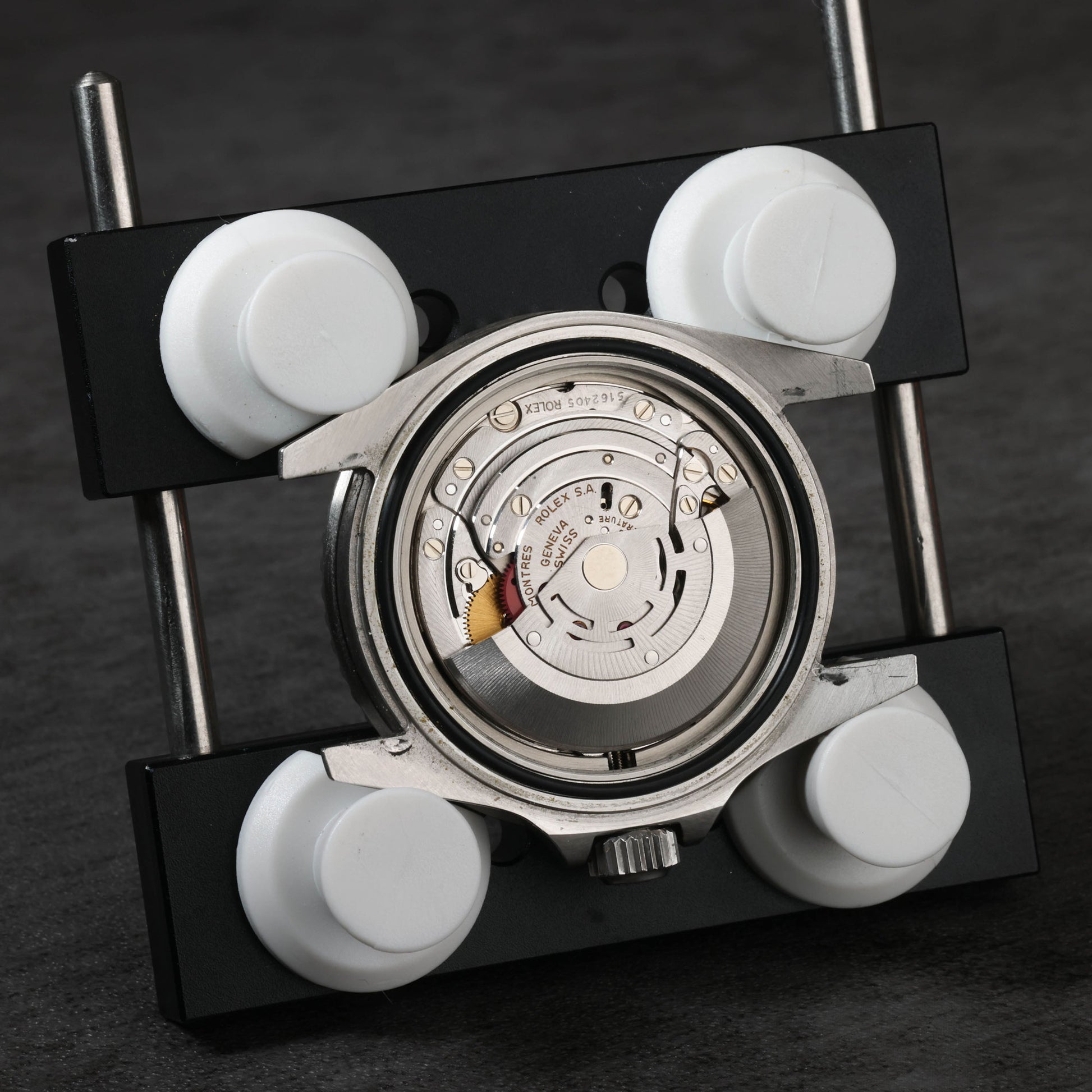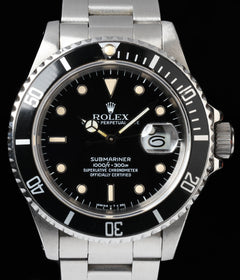Crown Vintage
Rolex Submariner 16610 40MM 1989
Rolex Submariner 16610 40MM 1989
Couldn't load pickup availability
Rolex Submariner 16610
The stainless-steel case presents in very good vintage condition with only light hairlines and notably sharp, well-defined lugs that point to a previously unpolished profile. The Oyster bracelet remains tight on the wrist with minimal stretch; surface marks are limited to fine desk-swirls, and the flip-lock clasp snaps shut crisply. Under direct light the gloss dial has matured into an even, attractive patina with a subtle “stardust” speckling that adds character without impairing legibility. Tritium hour plots are intact and match the hands, which show a light, even patina but no oxidation or flaking. Crystal, bezel and crown operate as intended. Given that this Submariner is now 36 years old, its original water-resistance can no longer be relied upon—treat it as a vintage timepiece and avoid swimming or diving and don’t ever wear you watch in the shower.
Share
Why we love this watch
Why we love this watch
Rolex Submariner 16610: A Milestone in the Evolution of the Dive Watch
When Rolex launched the original Submariner in 1953 it set the benchmark for professional dive watches, combining a robust Oyster case with a rotating timing bezel and exceptional water resistance. Over the subsequent decades the reference numbers 6200, 6538, 5512, 5513 and finally the 1680, 16800 and 168000 steadily introduced improvements such as crown guards, date windows, sapphire crystals and higher-grade steels. By the late 1980s the Submariner had reached a crossroads: the tool-watch era of rough-and-ready workhorses was giving way to a new expectation of luxury, precision and daily versatility. This transition culminated in 1989 with the introduction of reference 16610, a watch that quietly but decisively repositioned the Submariner for the modern age.
Debut of Reference 16610
Rolex revealed the 16610 in 1988 for select markets and rolled out full-scale production in 1989. Outwardly it looked much like its immediate predecessor the 168000, retaining the familiar 40 mm case size, aluminium bezel insert and date aperture under a cyclops lens. Yet inside and under the surface almost everything was upgraded. The launch year matters because it prepared the stage for three decades of uninterrupted production until 2010; early 1989 examples therefore represent the purest form of the reference before incremental updates followed in later years. Collectors sometimes call them “first-run 16610s”, identifiable by their R- or L-prefix serial numbers and tritium dials marked “Swiss – T<25” at six o’clock.
Calibre 3135 – A New Heart
The most significant change lay beneath the case-back: the brand-new calibre 3135. Replacing the long-serving 3035, this automatic movement featured a full balance bridge for improved shock resistance, a slightly slower beat rate of 28,800 vph for enhanced stability and a larger mainspring barrel delivering a solid 48-hour power reserve. Rolex also introduced a proprietary reverser gear system that optimised winding efficiency. With its Glucydur balance wheel and Microstella screws, the 3135 set a new accuracy standard and quickly gained a reputation for being virtually indestructible. Introduced first in the 16610 and the contemporary 16613 two-tone model, it went on to power numerous Datejust and Sea-Dweller references, underscoring its engineering significance.
904L Oystersteel Case and Bezel
While the 168000 had already trialled Rolex’s switch from 316L to 904L stainless steel, the 16610 was the first Submariner created from the ground up with this super-alloy in mind. 904L (today branded by Rolex as Oystersteel) offers superior corrosion resistance, particularly against saltwater and acidic sweat, while polishing to a brighter lustre. In practical terms a 16610 can endure decades of diving or desk-diving with minimal pitting or dulling. The aluminium bezel insert kept the classic coin-edge grip and 60-minute timing scale, but its engraving improved slightly in depth and clarity compared with earlier references, helping the insert hold its silvered numerals better over time.
Bracelet and Clasp Updates
Rolex paired the 16610 with the Oyster reference 93150 bracelet, a solid-link stainless option with brushed outer surfaces and a folding flip-lock clasp engraved “Rolex Oyster”. In 1989 the end-links were hollow 501B pieces and the clasp code typically bore the letter N, denoting the production year. While subsequent years introduced solid end-links and an updated 93250 bracelet with SEL fitment, the inaugural configuration preserved the lighter feel that divers appreciated for long decompression times. The diver’s extension link allowed the bracelet to expand over a wetsuit sleeve, a feature that remained unchanged until Rolex introduced the Glidelock system decades later.
Performance Underwater and Everyday Wear
The 16610 retained the collection’s 300-metre water-resistance rating, thanks to a Triplock crown with three gaskets, a screw-down case-back and a crystal gasket compressed by bezel tension. In the field it proved as dependable on coral reefs as on corporate boardrooms, echoing Rolex’s dual identity as both toolmaker and luxury house. For purchasers the watch offered something unprecedented: accuracy within chronometer specifications straight out of the box, a service interval comfortably stretching to a decade and a build quality that required no coddling.
Legacy Within the Submariner Family
The reference 16610 stayed in production for 21 years, during which Rolex updated lume (Super-LumiNova from about 1998 and Chromalight from 2008), improved bracelet solidity and eventually switched to an engraved rehaut and AR-coated crystal. Yet the early examples remain a snapshot of a pivotal moment: the last full-aluminium-bezel generation before the ceramic era, the first to house the calibre 3135 from day one and the first fully committed to 904L steel. This sweet-spot status explains why many enthusiasts consider 1989 to 1993 builds the cleanest expression of the modern classic Submariner.
Enduring Appeal
Decades on, a well-preserved 16610 stands out for its versatility. At 40 mm it remains contemporary without the maxi-case bulk of later references. The aluminium insert develops subtle fading that ceramic cannot replicate, and tritium plots acquire a parchment warmth unique to pre-1997 dials. Crucially, the calibre 3135 continues to be serviceable at any authorised Rolex workshop, ensuring longevity and parts availability. These factors combine to make the first-year 16610 a compelling alternative to vintage plexi Submariners and modern ceramic models alike. For daily wearers the reference offers scratch-resistant sapphire security; for period purists it supplies classic proportions and materials.
Final thoughts
The 1989 Rolex Submariner 16610 distilled 36 years of incremental improvements into one balanced package, matching a newly engineered calibre 3135 with corrosion-proof 904L steel and the timeless Submariner aesthetic. By retaining an aluminium bezel insert and modest 40 mm profile while embracing modern movement technology, it bridged the gap between vintage charm and contemporary performance. More than three decades later the first-run 16610 still fulfils its original brief: a dependable dive watch that transitions effortlessly from ocean depths to city streets. For Australian enthusiasts seeking a Submariner that captures the essence of both eras without compromising practicality, the inaugural 1989 model remains an enduring benchmark.
Case & Bracelet
Case & Bracelet
Case and bracelet in very good condition. Light hairlines visible. Very sharp lugs. Bracelet has minimal stretch.
Dial & Hands
Dial & Hands
Dial has formed a very pleasing even patina with stardust speckle. Hands are in good condition with a light patina forming. No oxidation.
Warranty & Condition
Warranty & Condition
Crown Vintage Watches provides a minimum 3-month mechanical warranty on pre-owned watches, from the date of purchase.
The warranty covers mechanical defects only.
The warranty does not cover damages such as scratches, finish, crystals, glass, straps (leather, fabric or rubber damage due to wear and tear), damage resulting from wear under conditions exceeding the watch manufacturer’s water resistance limitations, and damage due to physical and or accidental abuse.
Please note, water resistance is neither tested nor guaranteed.
Shipping and insurance costs for warranty returns to us must be covered by the customer. Returns must be shipped via traceable courier. Return shipment must be pre-paid and fully insured. Collect shipping will be refused. In case of loss or damages, the customer is liable.
Our Pledge
At Crown Vintage Watches, we stand by the authenticity of every product we sell. For added peace of mind, customers are welcome to have items independently authenticated at their own expense.
Condition
Due to the nature of vintage timepieces, all watches are sold as is. We will accurately describe the current condition and working order of all watches we sell to the best of our ability.
Shipping & Refund
Shipping & Refund
